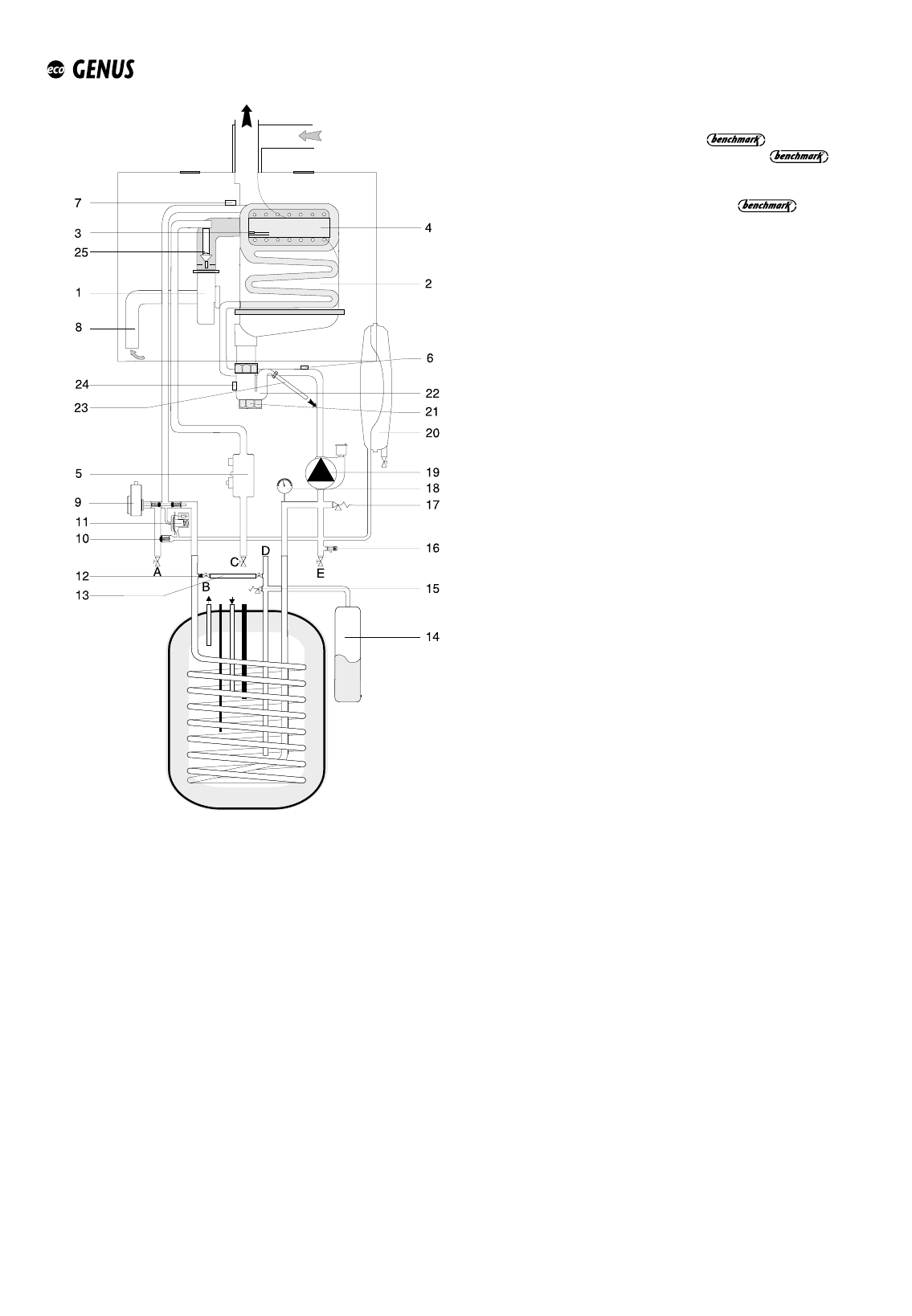
12
275
3. COMMISSIONING
3.1. INITIAL PREPARATION
MTS (GB) Limited support the initiative. Within the
information pack you will find a copy of the logbook. It is
important that this is completed in the presence of your customer,
they are shown how to us it, and it is signed by them. Please instruct
your customer that they must have their logbook with them
whenever they contact a service engineer or us.Preliminary electrical
system checks to ensure electrical safety must be carried out by a
competent person i.e. polarity, earth continuity, resistance to earth
and short circuit.
F
ILLING THE HEATING SYSTEM:
Remove the panels of the case and lower the control panel (see
section 3.2. for further information).
Open the central heating flow and return cocks supplied with the
connection kit.
Unscrew the cap on the automatic air release valve one full turn
and leave open permanently.
Close all air release valves on the central heating system.
Gradually open valve(s) at the filling point (filling-loop) connection
to the central heating system until water is heard to flow, do not
open fully.
Open each air release tap starting with the lower point and close it
only when clear water, free of air, is visible.
Purge the air from the pump by unscrewing the pump plug
and also manually rotate the pump shaft in the direction
indicated by the pump label to ensure the pump is free.
Close the pump plug.
Continue filling the system until at least 1 bar registers on the
pressure gauge.
Inspect the system for water soundness and remedy any leaks
discovered.
F
ILLING OF THE D.H.W. SYSTEM:
Close all hot water draw-off taps.
Open the cold water inlet cock supplied with the connection kit.
Open slowly each draw-off tap and close it only when clear water,
free of bubbles, is visible
G
AS SUPPLY:
Inspect the entire installation including the gas meter, test for
soundness and purge, all as described in BS 6891:1988.
Open the gas cock (supplied with the connection kit) to the
appliance and check the gas connector on the appliance for leaks.
When the installation and filling are completed turn on the central
heating system (sect. 3.4) and run it until the temperature has
reached the boiler operating temperature.
The system must then be immediately flushed through.
The flushing procedure must be in line with BS 7593:1992 Code of
practice for treatment of water in domestic hot water central heating
systems.
During this operation, we highly recommend the use of a central
heating flushing detergent (Fernox Superfloc or equivalent), whose
function is to dissolve any foreign matter that may be in the system.
Substances different from these could create serious problems
to the pump or other components.
The use of an inhibitor in the system such as Fernox MB-1 or
equivalent is strongly recommended to prevent corrosion (sludge)
damaging the boiler and system.
Failure to carry out this procedure may invalidate the appliance
warranty.
24 RFFI SYSTEM
LEGEND
:
1- Fan
2 - Main Heat exchanger
3 - Ignition/detection electrode
4 - Burner
5 - Gas valve
6 - Heating return temperature probe
7 - Heating flow temperature probe
8 - Silencer
9 - Motorised valve
10 - Automatic by-pass
11 - Main circuit flow switch
12 - Non-return valve (integral to Jig Kit)
13 - Filling loop (integral to Jig Kit)
14 - Indirect cylinder expansion vessel
15 - Expansion relief valve
16 - Drain valve
17 - Safety valve (3 bar)
18 - Pressure gauge
19 - Circulation pump with automatic air release valve
20 - Expansion vessel
21 - Condensate trap inspection cap
22 - Condensate trap
23 - Condensate discharge tube
24 - Condensate trap inlet
25 - Injector


















